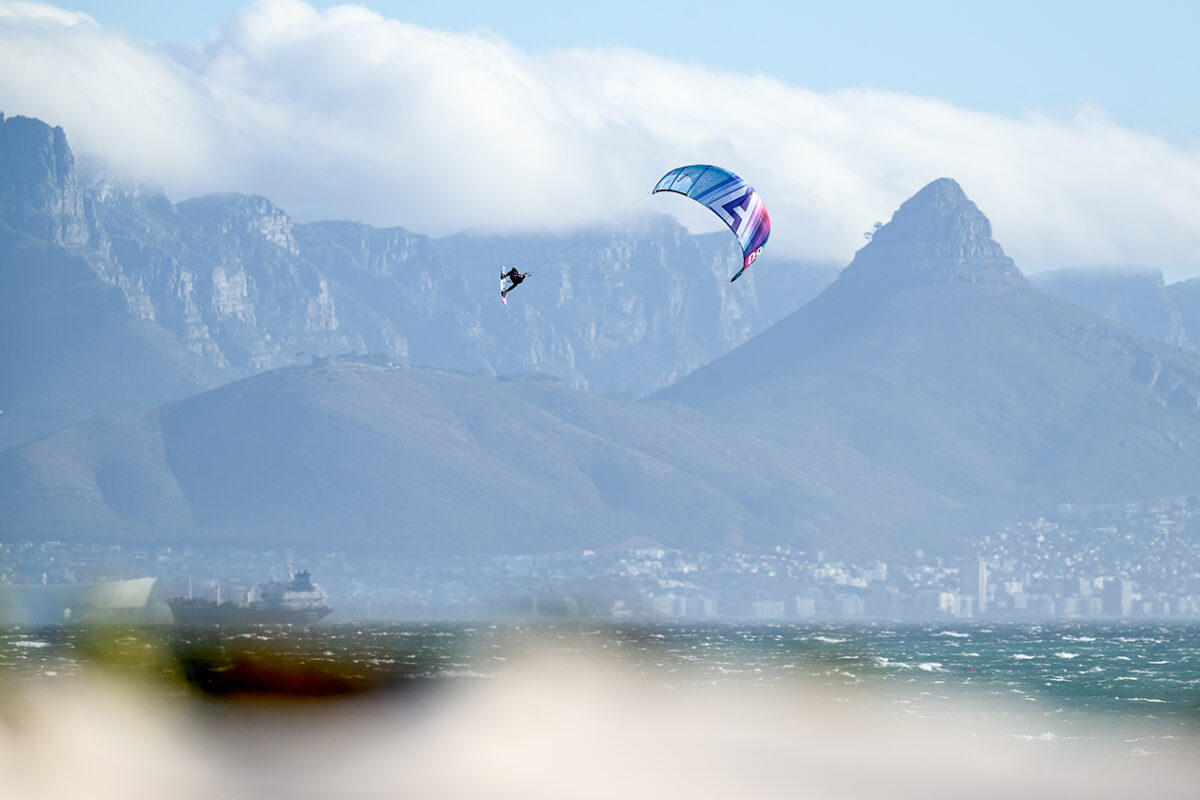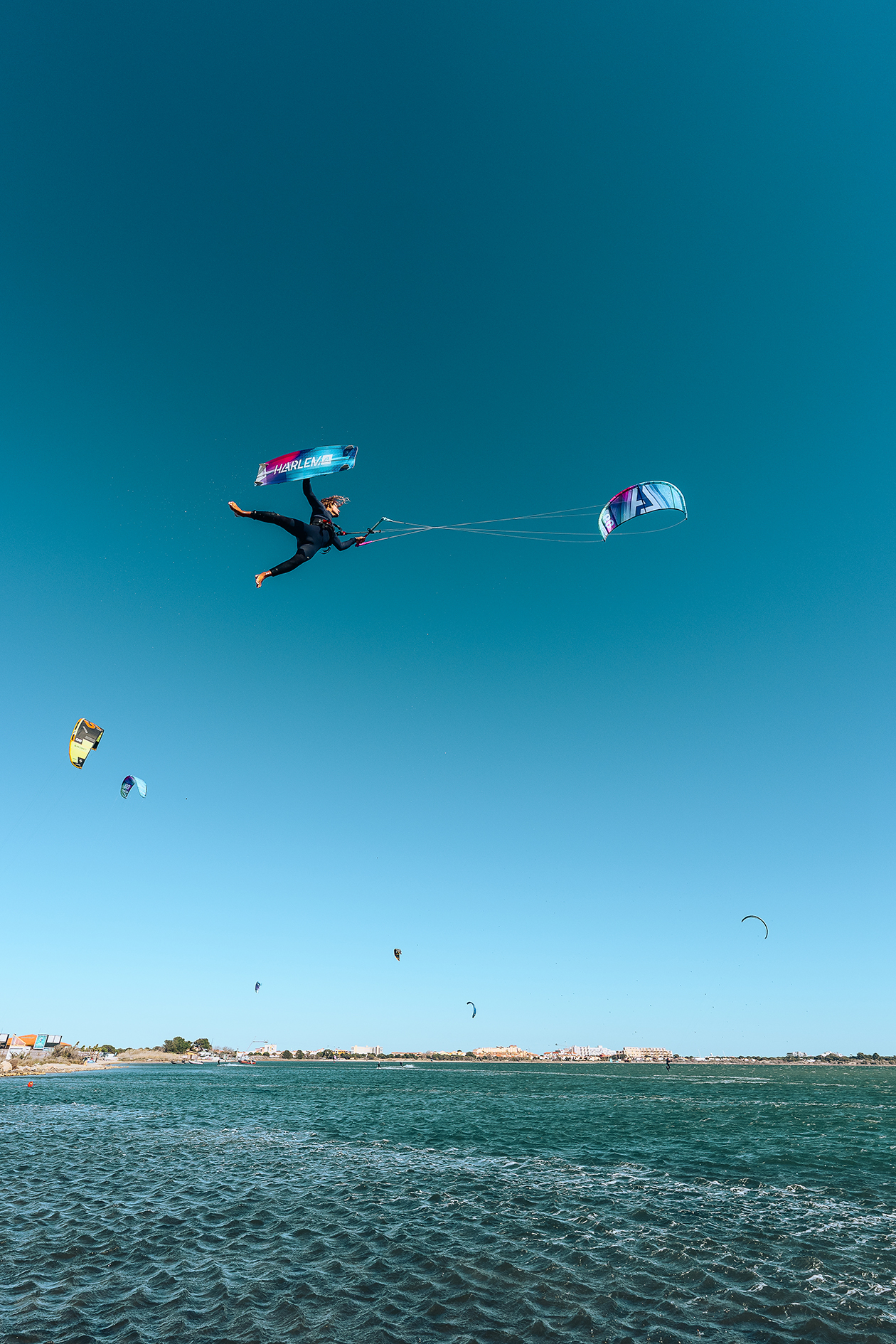Tell Me About It: Harlem Peak & Ascent
Harlem have added some brand-new additions to their range, the Peak kite – a Big Air machine – and the Ascent twintip. Aaron Hadlow gave us the lowdown on the new gear.
Photos Andy Troy and Craig Kolesky
When you purchase gear through links on our site, we may earn a small commission. Here’s why you can trust our tests and our affiliate partner.

Harlem have added some brand-new additions to their range, the Peak kite – a Big Air machine – and the Ascent twintip. Aaron Hadlow gave us the lowdown on the new gear.
Photos Andy Troy and Craig Kolesky
Who have you designed the Peak for? Would the average rider get on okay with it?
We always design and test all our kites with the average rider in mind. The kite has to be easy and intuitive for all riders but with performance that can be unlocked. In the end we are aiming to create incredible kites but there is no point if only a few kiters can ride them. So I can’t stress enough that even though the Peak can win events and break records in the right hands, it should also give any rider trying to step up their game the confidence to improve.
Your Thrive kite has already proven itself in competition and we noticed your team riders used both the Peak and Thrive at Lords of Tram. What does the Peak offer compared to the Thrive?
I would say that the Peak heads more toward higher single loops; it has a more progressive turn and lower loop. The Thrive, in the smaller sizes, works well for double loops. This is at the highest level but more to the point, by having a smoother, wider turn, the Peak also finds its way into the perfect place in the wind window for easy takeoffs. The Peak’s ability to drive far into the wind can give you very vertical takeoff and fill you with confidence whilst jumping. In contrast I would say the Thrive is a bit nimbler and more forgiving. Of course, the kites have some similar DNA but they are different. We want to cater for people with different tastes, so we try to make the kites excel in different areas across the models.
Do any construction details differ on the Peak compared to your other kites?
The construction of the Peak features the same Brainchild construction methods, which are constantly evolving and being tweaked but the fundamentals are the same. We have the PROWELD that means that the Dacron segments of the leading edge are welded together, giving a stiff but forgiving frame. We have Flylite canopy that is super light and stiff, and gives our kites this distinct crispy feeling and really adds performance. We also have the super lightweight laminated Mylar struts.
more about the peak, here
Moving on to the Ascent board – how does this compare to the Launch?
The boards differentiate but in this case are positioned by aiming at beginner to intermediate for the Launch and then intermediate to advanced for the Ascent.
The Launch is easy-going due to the flex, glass construction and fast planing speed. It is comfortable in a wide range of conditions but can still handle itself well when pushed.
The Ascent has carbon, and is more complex and responsive. We have a complete new and unique channel set-up with double concave that provides a huge amount of grip. As always we make sure the board is comfortable to ride – the channels and the rocker-line makes the board smooth. It is stiffer especially in the center for super solid landing although it has a bit more flex in the tips, which makes the board a bit more forgiving on takeoff and landing. I think what is noticeable is the way the board carves and bites into the wind at takeoff. We really match it to the kites, so that package, combined with our Peak especially, really allows you to extract the maximum.
What other design and construction elements make the Ascent ideal for its intended use?
As always, it’s a huge combination of elements that have to come together to make the balance you are looking for. It is really quite incredible how small changes make such a huge difference to the board. In the Ascent we use a combination of carbon and glass, blended together to create a solid flex foundation. We use a combination of different carbon weaves to produce the flex we need – for instance, between the feet certain combinations will be stiffer and at the tips other combinations will be softer. The rocker and outline combined with the channels had to be tweaked to get the perfect balance of grip, speed and comfort.
How involved have your team riders been in the development process of the Peak and Ascent?
Regarding the Peak, we pre-launched the kite with ‘prototype’ graphics. We had already nailed 95% of the kite but this was a great way to get the riders on the kite as soon as possible. This also gave us the opportunity to strength test the kites, making sure they have no problems once in production. It is a different strategy but the adaptability and the fast-growing nature of the company allows for interesting ideas like this.
With the Ascent we have been on a tight deadline and with this board in particular, we already had a really solid idea of what we were looking for from the start. I have ridden, shaped and tested so many boards in my career that I took upon myself to really deliver something special alongside Ralf Groesel. Once we were closer to the final product it was important to see what our riders thought and make sure it was performing for them as expected. I was confident that would be the case and now it seems they are really loving it. At the end of the day, like the kites, the board should work for everyone looking to push themselves forward but still have the potential for the world’s best to extract all its potential. I believe we have achieved that. ■
You can get the latest goodness from the world of kiteboarding by subscribing to our print edition. You'll get 5 packed issues, plus a free tee and free digital access. And you'll be directly helping with our sustainability efforts too!
Check it out now